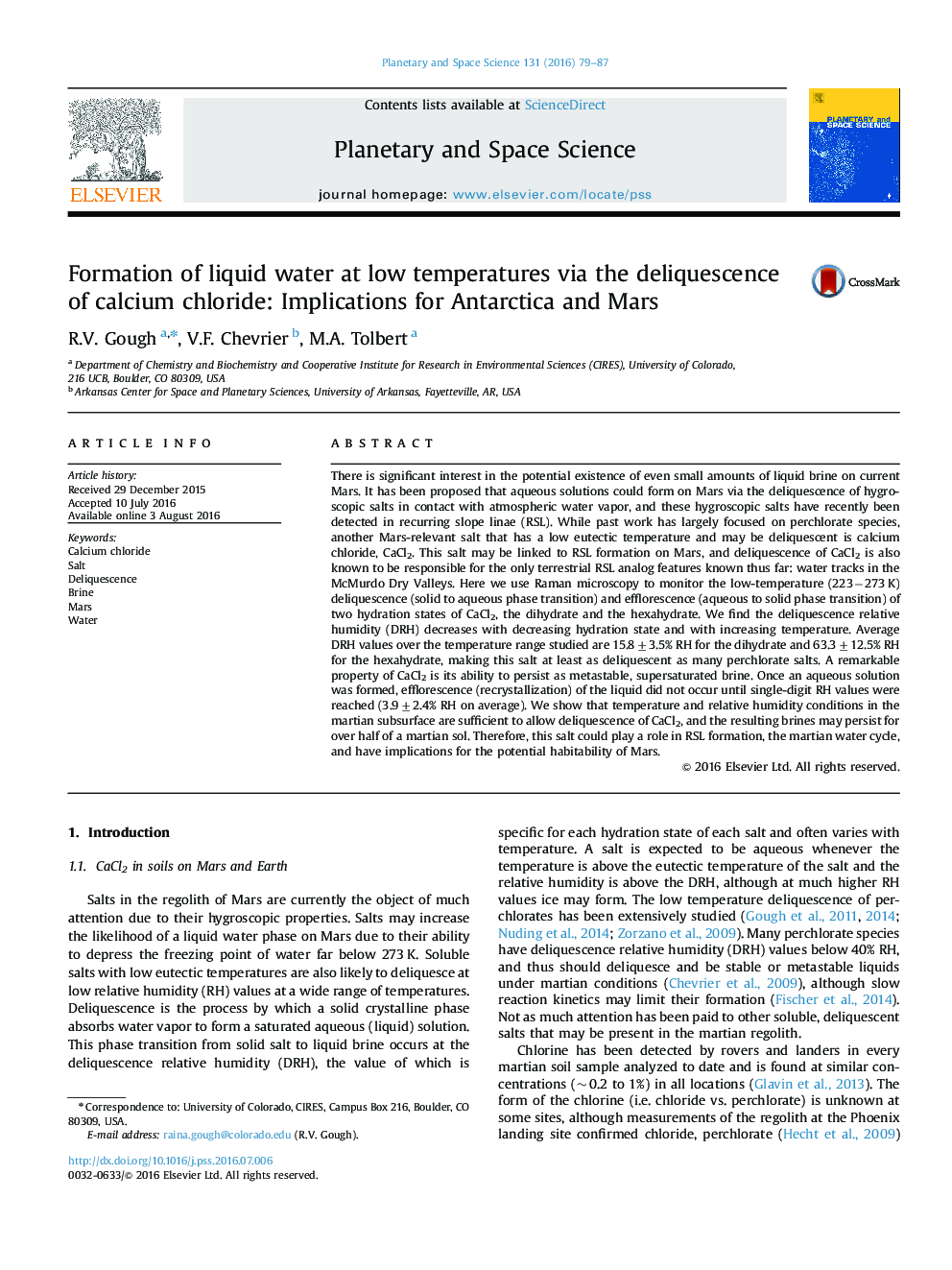| کد مقاله | کد نشریه | سال انتشار | مقاله انگلیسی | نسخه تمام متن |
|---|---|---|---|---|
| 5488104 | 1523909 | 2016 | 9 صفحه PDF | دانلود رایگان |
عنوان انگلیسی مقاله ISI
Formation of liquid water at low temperatures via the deliquescence of calcium chloride: Implications for Antarctica and Mars
ترجمه فارسی عنوان
تشکیل آب مایع در دماهای پایین از طریق رسوب کلرید کلسیم: پیامدهای قطب جنوب و مریخ
دانلود مقاله + سفارش ترجمه
دانلود مقاله ISI انگلیسی
رایگان برای ایرانیان
کلمات کلیدی
کلرید کلسیم، نمک، محکومیت آبنمک، مریخ، اب،
موضوعات مرتبط
مهندسی و علوم پایه
علوم زمین و سیارات
فیزیک زمین (ژئو فیزیک)
چکیده انگلیسی
There is significant interest in the potential existence of even small amounts of liquid brine on current Mars. It has been proposed that aqueous solutions could form on Mars via the deliquescence of hygroscopic salts in contact with atmospheric water vapor, and these hygroscopic salts have recently been detected in recurring slope linae (RSL). While past work has largely focused on perchlorate species, another Mars-relevant salt that has a low eutectic temperature and may be deliquescent is calcium chloride, CaCl2. This salt may be linked to RSL formation on Mars, and deliquescence of CaCl2 is also known to be responsible for the only terrestrial RSL analog features known thus far: water tracks in the McMurdo Dry Valleys. Here we use Raman microscopy to monitor the low-temperature (223â273 K) deliquescence (solid to aqueous phase transition) and efflorescence (aqueous to solid phase transition) of two hydration states of CaCl2, the dihydrate and the hexahydrate. We find the deliquescence relative humidity (DRH) decreases with decreasing hydration state and with increasing temperature. Average DRH values over the temperature range studied are 15.8±3.5% RH for the dihydrate and 63.3±12.5% RH for the hexahydrate, making this salt at least as deliquescent as many perchlorate salts. A remarkable property of CaCl2 is its ability to persist as metastable, supersaturated brine. Once an aqueous solution was formed, efflorescence (recrystallization) of the liquid did not occur until single-digit RH values were reached (3.9±2.4% RH on average). We show that temperature and relative humidity conditions in the martian subsurface are sufficient to allow deliquescence of CaCl2, and the resulting brines may persist for over half of a martian sol. Therefore, this salt could play a role in RSL formation, the martian water cycle, and have implications for the potential habitability of Mars.
ناشر
Database: Elsevier - ScienceDirect (ساینس دایرکت)
Journal: Planetary and Space Science - Volume 131, 15 October 2016, Pages 79-87
Journal: Planetary and Space Science - Volume 131, 15 October 2016, Pages 79-87
نویسندگان
R.V. Gough, V.F. Chevrier, M.A. Tolbert,
